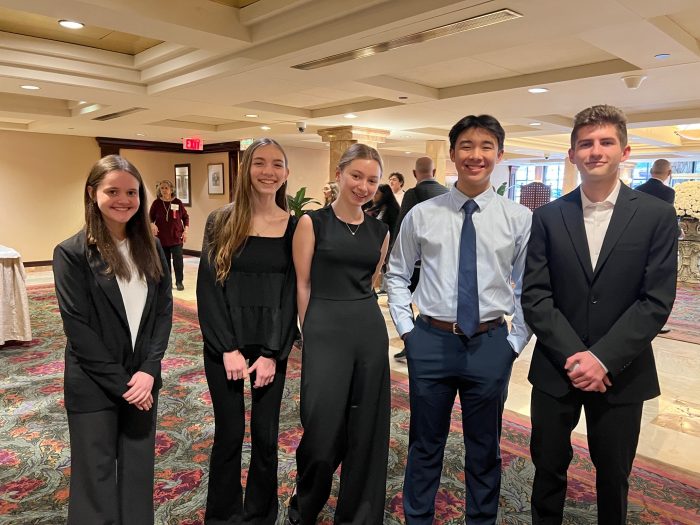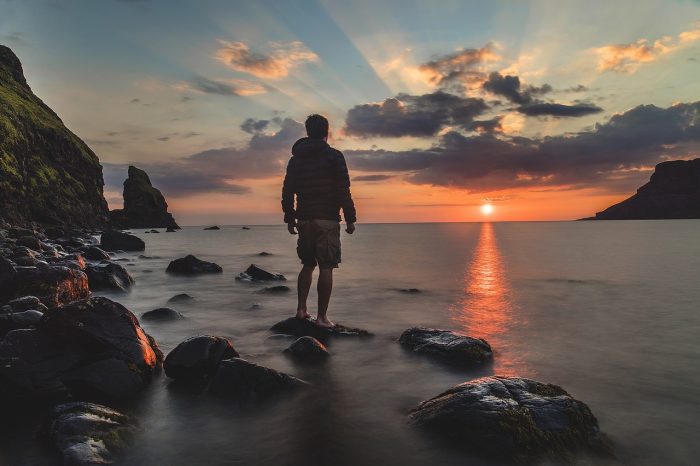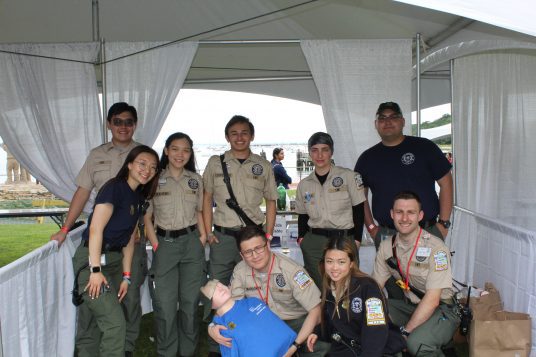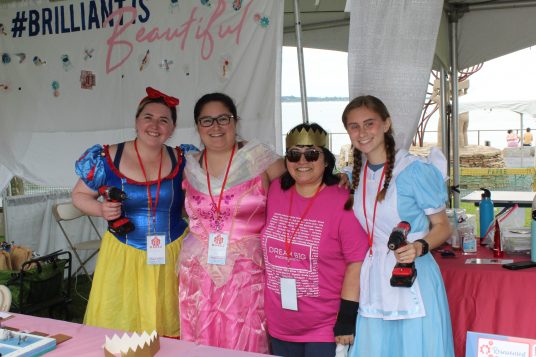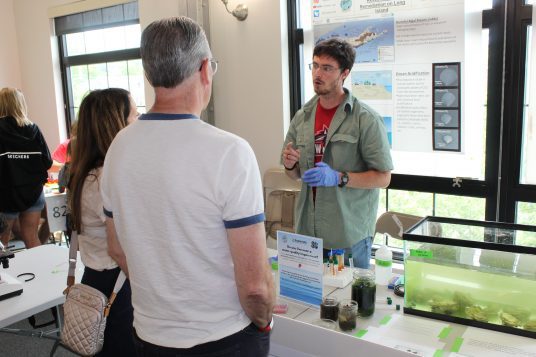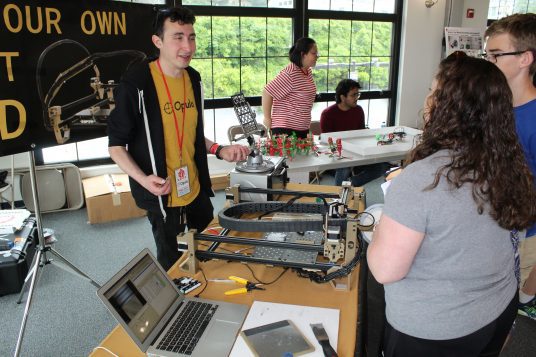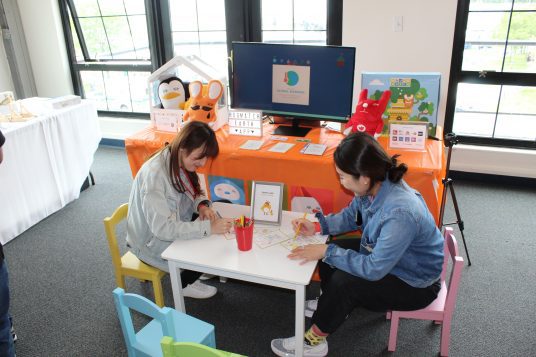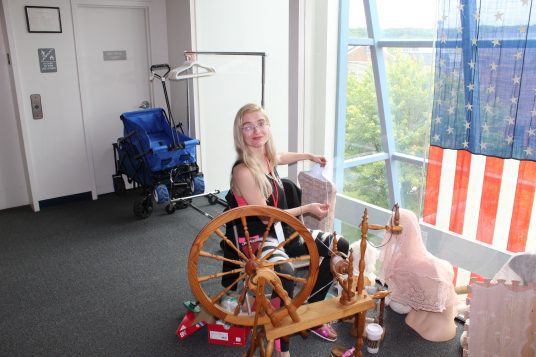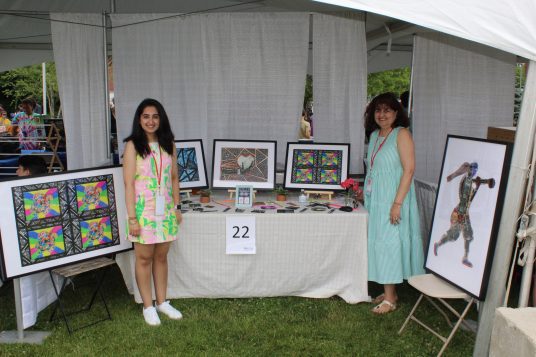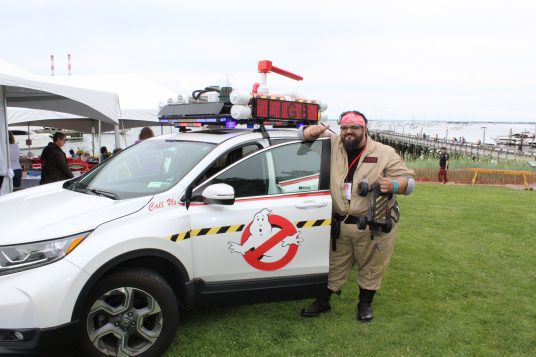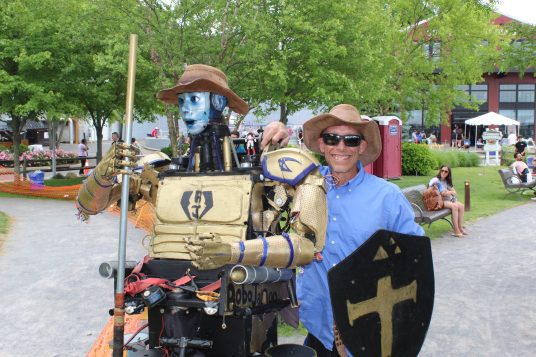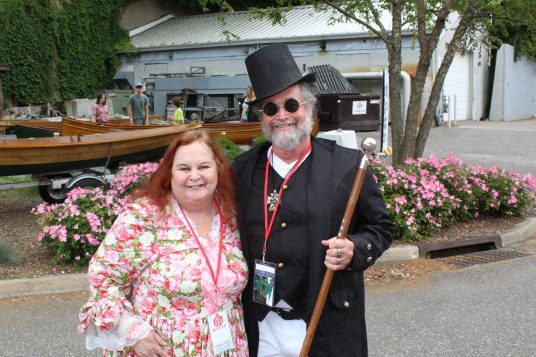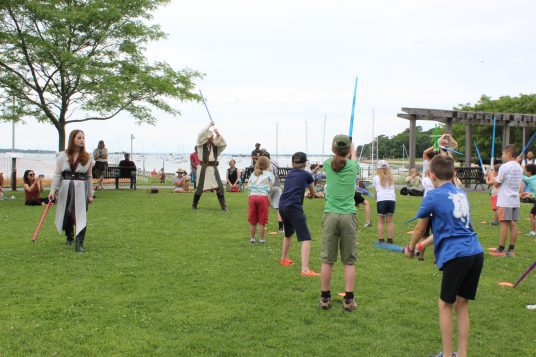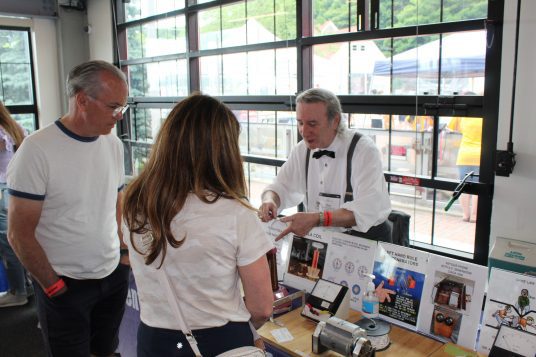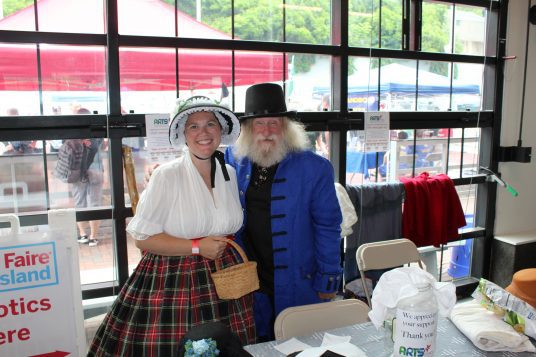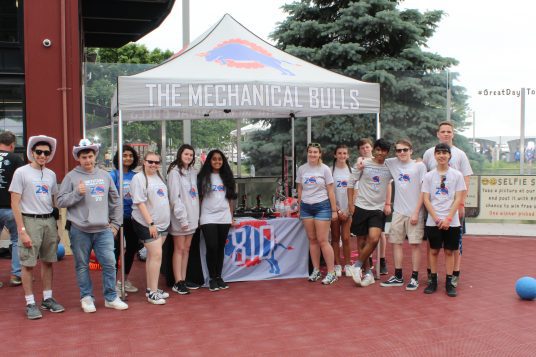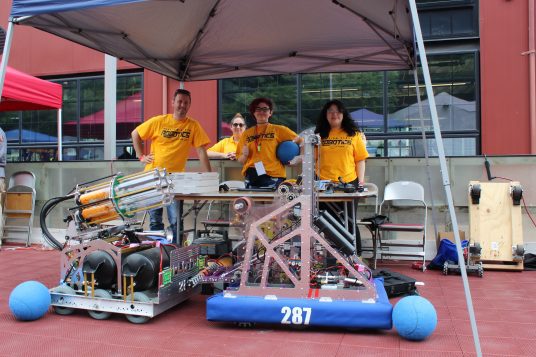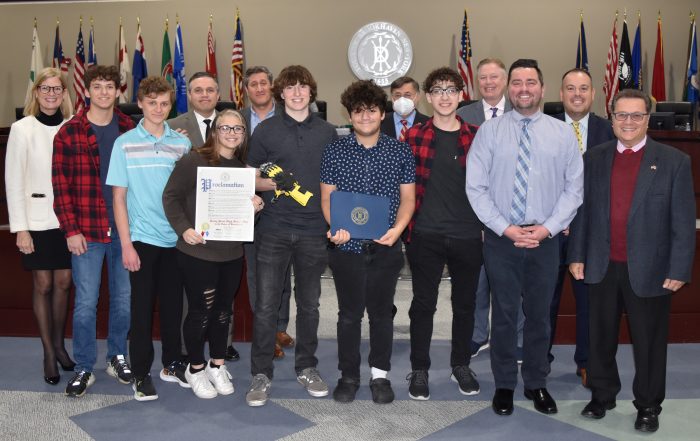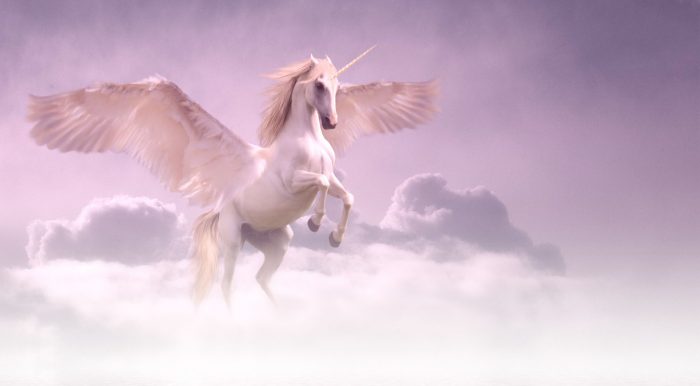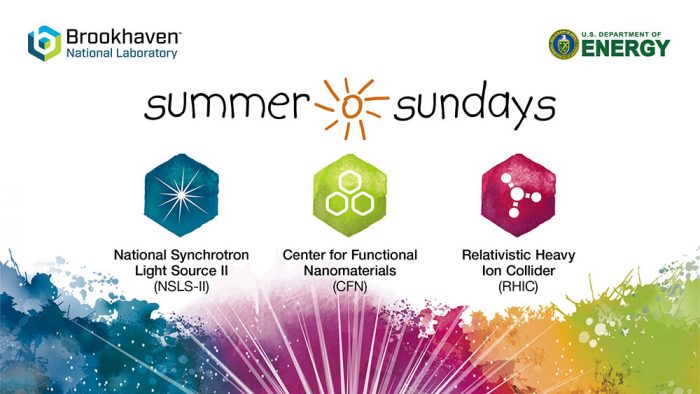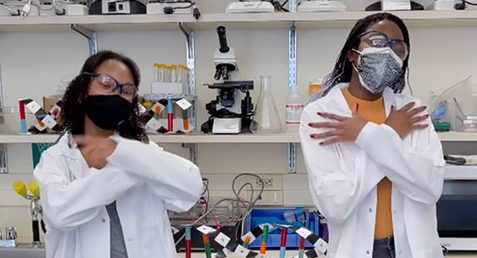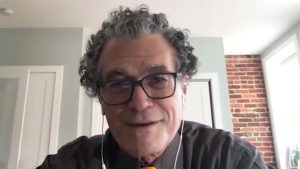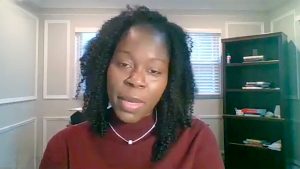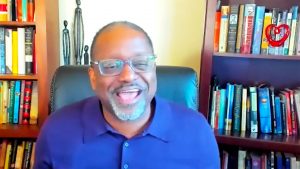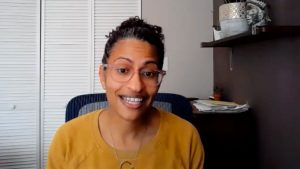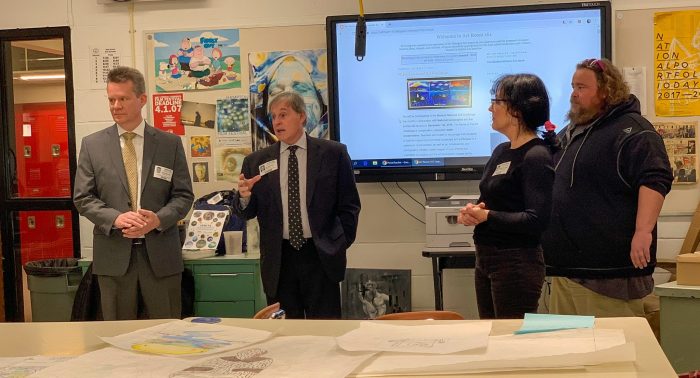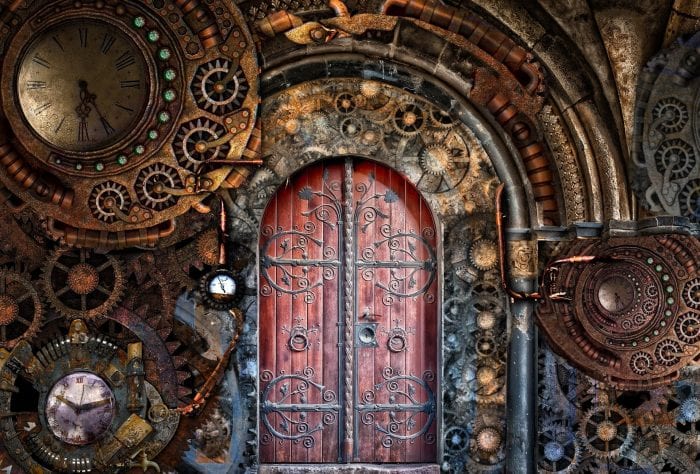After a two-year hiatus due to the pandemic, Maker Faire Long Island returned to Port Jefferson village on Saturday, June 11, at the Village Center.
Maker Faire LI is an annual festival held by the Long Island Explorium, a science and engineering museum based in Port Jeff. Its purpose is to promote STEM (science, technology, engineering and mathematics) education by way of innovations and crafts of people throughout the region and country.
Angeline Judex, executive director of the Explorium, discussed the surprising success of the event after its two-year pause. “We’re really happy with this event,” she said. “It has turned out really well — much better than we actually expected.”
Proceeds from the event will support the Explorium’s various educational programs. The goal of these programs is to enliven STEM through activities that are engaging and fun. Judex said the Explorium hopes to inspire young people and nourish a lifelong pursuit of STEM.
“It’s really important for children to be inspired and excited about STEM at an early age,” Judex said, adding, “We focus on enriching and inspiring children from K-6 so that they get excited about STEM because this is the future.” She added, “We want to support the next generation of leaders and scientists who are going to be inspired to solve some of the challenges in the environments we live in.”
Hundreds of makers gathered at Harborfront Park to showcase their own unique contributions to the field. Sejal Mehra, one of the presenters at the festival, displayed what she has coined “engineering art.” Her works integrate aspects of collage, engineering and sustainability studies under a common discipline.
“I create ‘engineering art,’ which is made from recycling old computer and electronic parts or plastic that would have otherwise ended up in the trash to show the beauty of STEM,” she said. “I’m on a mission to change the face of STEM through art.”
Makers such as Mehra offer the necessary guidance for young people to pursue STEM. Through their example of creativity and ingenuity, young people are challenged to change the world themselves.
“I think it’s really important to have programs like this one to help inspire young minds into a lifelong pursuit of STEM because you never know when or how something is going to spark their love for STEM,” Mehra said. “It is also great for young minds to be inspired by young adults like myself because we were just in their shoes and can help motivate them to pursue STEM. Without programs like this, the amount of exposure to the field and its vast possibilities and intersections would not be possible.”
Mehra’s artwork is currently for sale and can be purchased through her website or by contacting her via email or Instagram.
Joining Judex was a group of public officials who offered their support for the museum in its mission to educate the next generation of scientists and engineers. New York State Assemblyman Steve Englebright (D-Setauket), a geologist by profession, spoke of the importance of Maker Faire in encouraging young minds to tackle the impending challenges of environmental degradation.
“The purpose of bringing us all together is to enhance this community, to imagine possibilities for all of the people who live here and visit here, and to use our imagination just a little bit,” he said. “One of the things that’s very important is the narrative and theme that are interwoven around protecting the environment. We’re situated here in beautiful Port Jefferson on the edge of the harbor, and it is a beautiful place to remember the importance of sustainability.”
Suffolk County Legislator Kara Hahn (D-Setauket) was also present for the event. She thanked the Explorium for providing these services and enriching the community.
“I am pleased to be here to support Maker Faire Long Island once again, to support the Explorium, and encourage children and our residents to explore, to innovate, to use their imagination and encourage ingenuity,” she said. “Thank you for all you do to encourage that in children right here in our own backyard.”
Brookhaven Town Councilmember Jonathan Kornreich (D-Stony Brook) recognized Judex for the work she put into making this annual tradition successful once again and for championing STEM and motivating young people.
“I want to thank you not only for the work you did to bring this event together, but for the work you do all year long to create a fun place for kids to do science, to teach kids, to make it accessible to everybody, to bring science to places where maybe it isn’t, and to find new places to suddenly discover science,” the councilmember said.
Kathianne Snaden, Village of Port Jefferson deputy mayor, thanked the many entities that helped make this event possible once again.
“To all of the volunteers, to all of the makers, to the attendees, to our code department, our parks department and our highway department, without all of you coming together to make an event like this happen, we just couldn’t do it,” she said. “To the Explorium for providing cutting-edge technology, programming and hands-on learning for our children, it is just unmatched in this area.”
Village trustee Rebecca Kassay and her husband volunteered as traffic guards during the event. She called it “a pleasure directing parking.”
“As my husband and I stand and direct parking, we look at the children leaving this event and I asked them, ‘What have you made today?’” the trustee said. “Their faces light up and they show me something they’ve made, whether it’s a magnet, whether it’s a whirligig, whether it’s lip balm.” She continued, “It is so important to empower these young people with the gift of demystifying what is in the world around them.”
Englebright concluded the remarks with an anecdote. When the assemblyman was just 14 years old, his science teacher at the time recommended he attend a junior curator program at the Brooklyn Children’s Museum. His decision to heed that advice would reshape the course of his life.
“I became a junior curator and it changed my life,” he said. “The Explorium, this children’s museum, I believe is going to change an awful lot of young people’s lives. Now here I am — with white hair — some years later, and I can tell you of the importance of your programs and the worthiness of everything that you do.”














